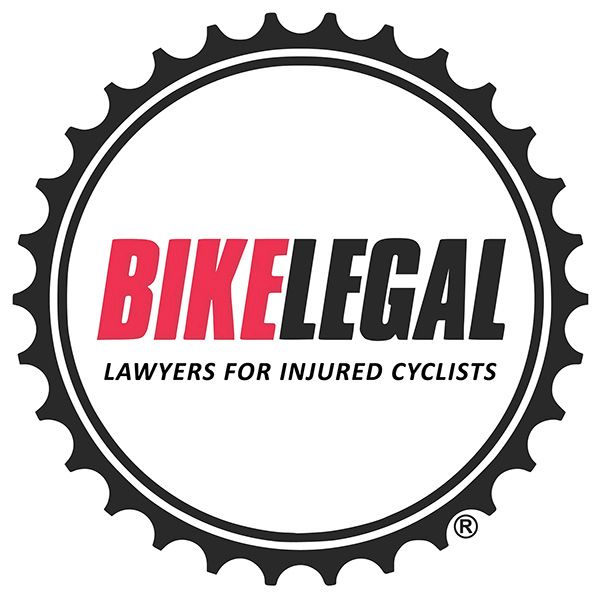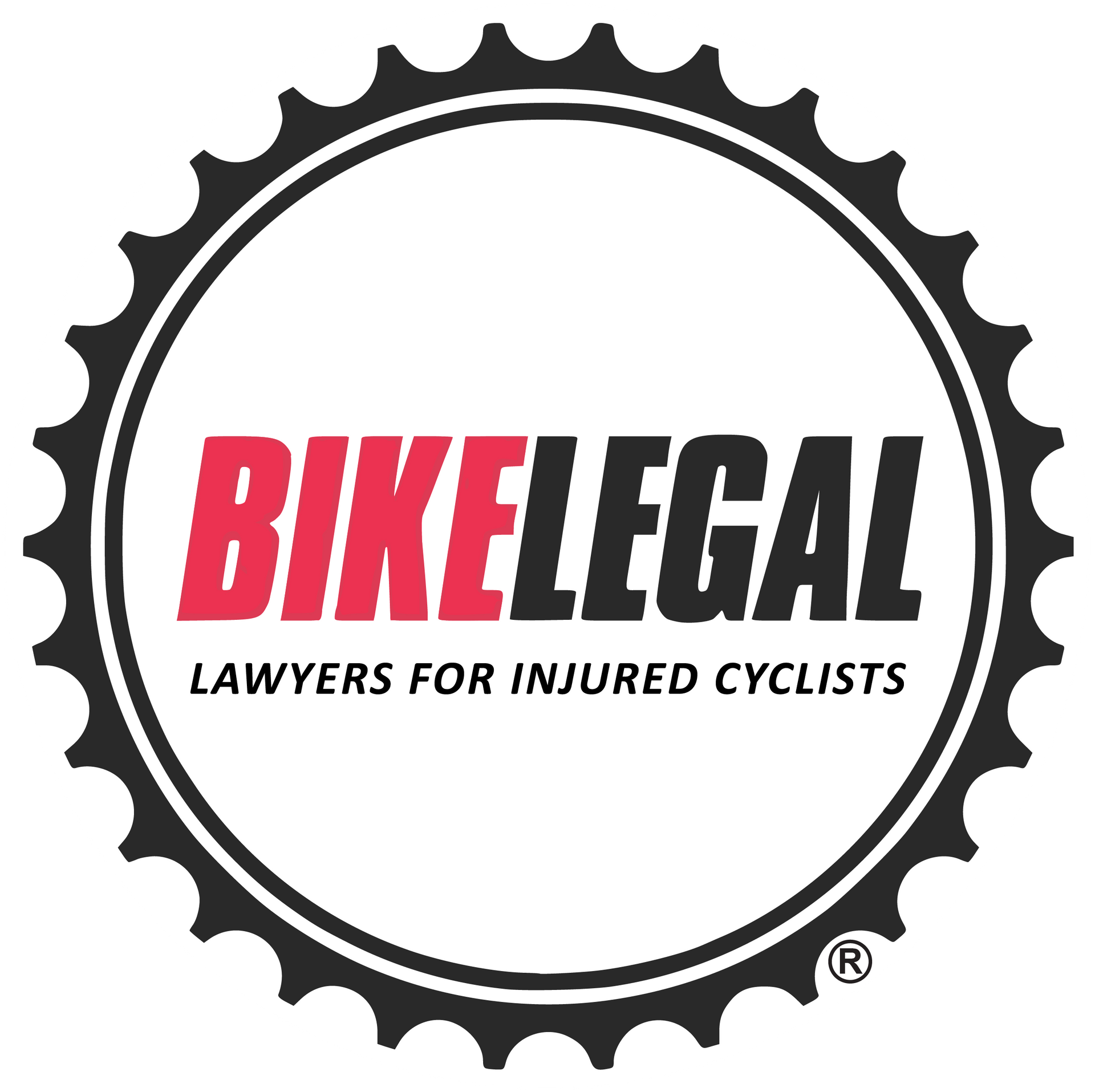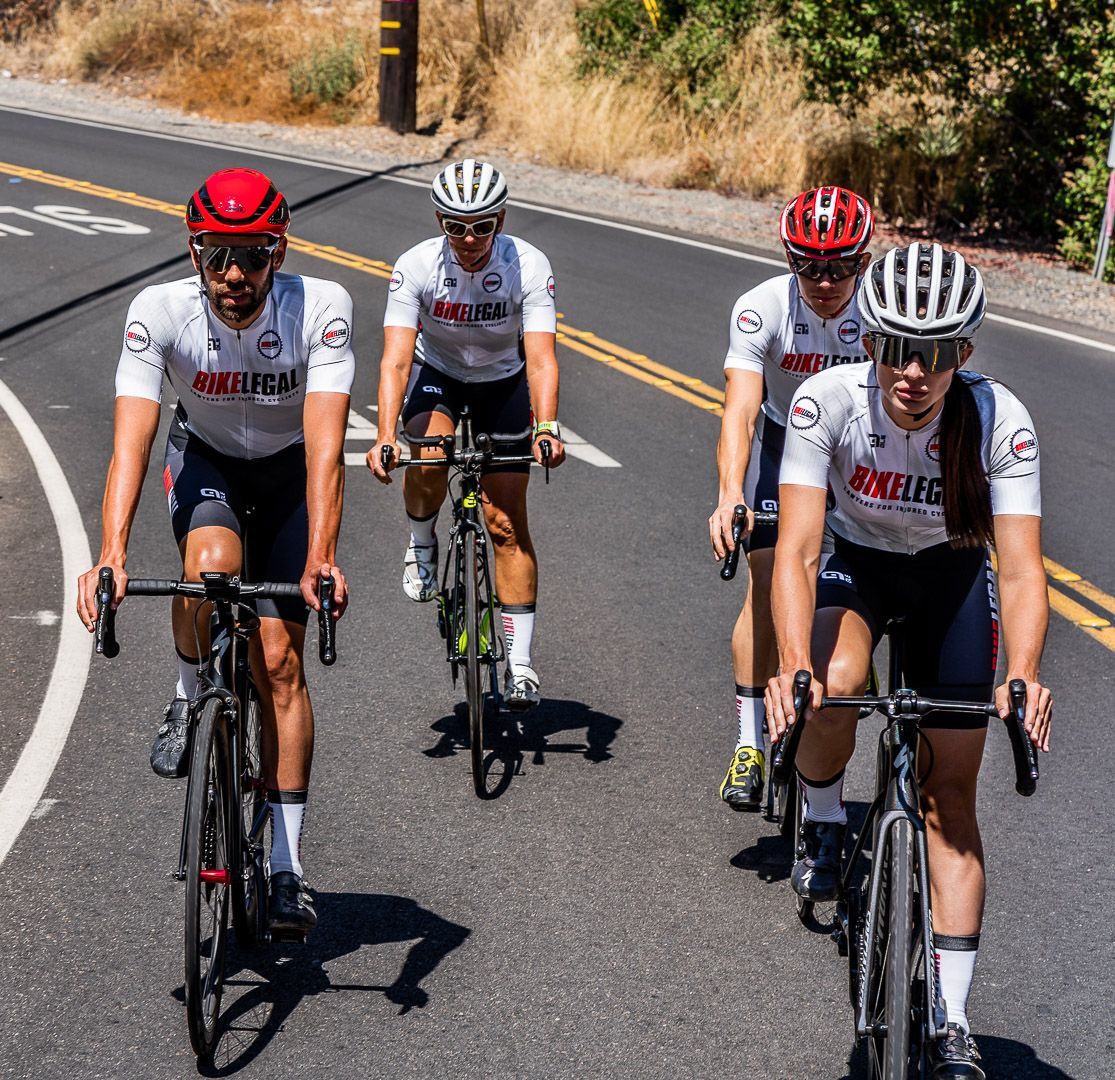Bike Accidents Without Helmets: Injury Risks, Helmet Laws, and Real Stories That Could Save Your Life
Follow us on
social media!
Bike accidents without helmets remain a major cause of preventable injuries and deaths in the United States. Despite clear evidence that helmets reduce the risk of serious head trauma, helmet use is still inconsistent across all age groups.
Studies show that only 35% of adult cyclists wear helmets for all or most of their rides, and about half wear one occasionally. Among children, usage rates are even more concerning—one study found that only 15% of children under 15 wear helmets regularly. With over 1,000 cyclists killed and over 130,000 injured each year, the consequences of not wearing a helmet are more severe than many realize.
This article breaks down the real risks of cycling unprotected, the laws surrounding helmet use, and stories of riders whose helmets made the difference between life and death. Whether you’re a casual rider or a daily commuter, understanding the impact of bicycle accidents without helmets is a critical step towards your safety.
Risks Associated with Cycling Without Helmet
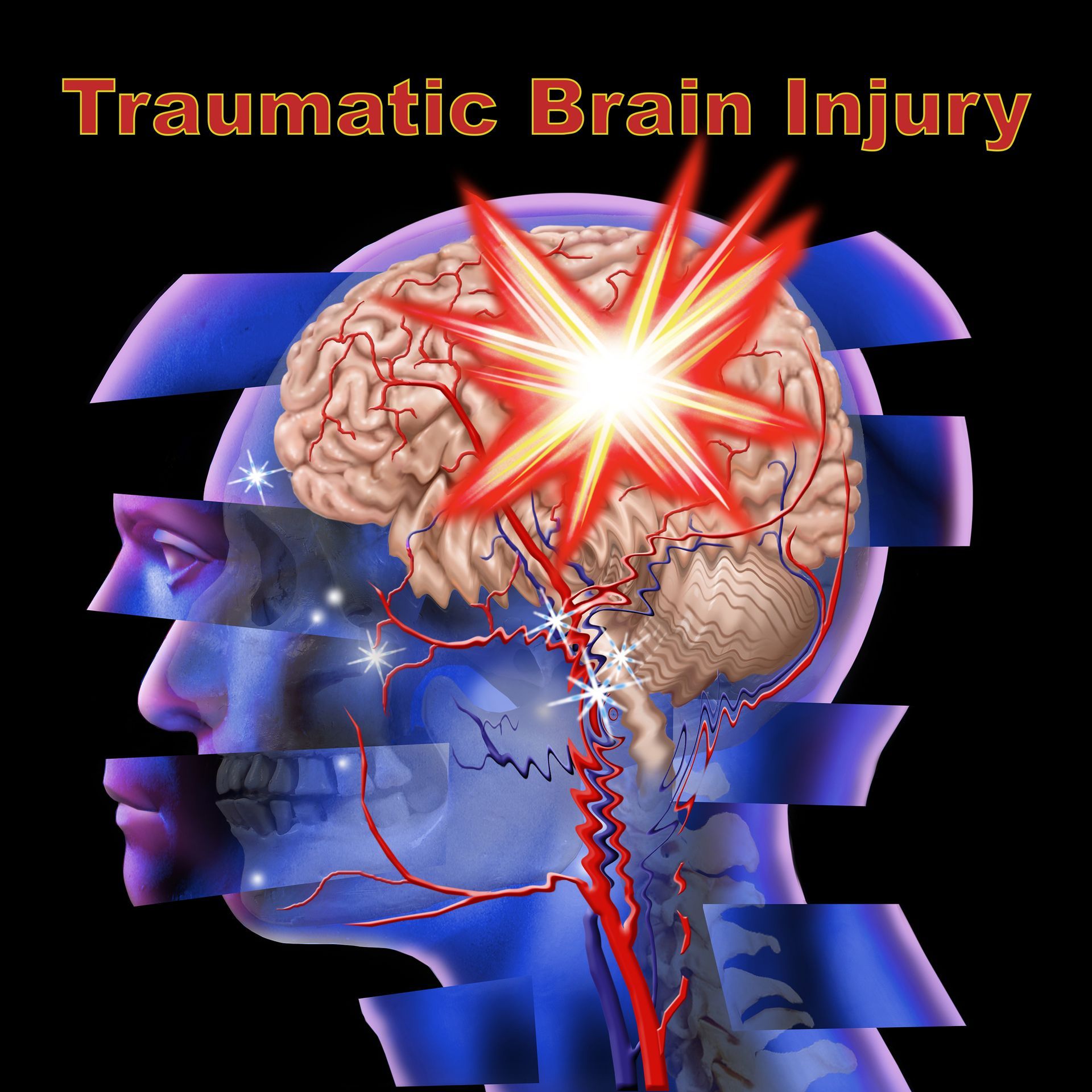
Riding a bike gives you a sense of freedom, the wind in your hair, and the thrill of speed. Yet, this exhilarating experience can quickly turn dire without the protection of a bicycle helmet. The risks of biking without one are not merely about minor scrapes or bruises; they involve serious, sometimes life-altering injuries.
Wearing a helmet will save your life. Not wearing your helmet can lead to Traumatic brain injuries.
Bicycle-Related Head & Facial Injuries
Bicycle-related head injuries are the biggest and most fatal risks of not wearing helmets.
A fall from a bike can happen in the blink of an eye, but the consequences can last a lifetime. Head injuries range from concussions to more serious traumatic brain injuries (TBI), with the latter having the potential to affect cognitive function, physical abilities, and emotional well-being.
A serious head injury could be a life-altering experience. Practice safe biking and wear your helmet to live a long and healthy life!
Facial Injuries
Facial injuries can range from minor scrapes and bruises to severe fractures, dental damage, and deep lacerations. The face, lacking the protection of a helmet, is particularly vulnerable to impact with the road, other vehicles, or objects. Such injuries can lead to long-term consequences, including scarring, disfigurement, and sensory loss.
Increased Fatality Rates
Statistics reveal a grim reality – the absence of a bicycle helmet significantly increases the risk of a fatality in a bike accident. Helmets are designed to absorb impact, reducing the force before it reaches the skull and brain. Without this buffer, cyclists are left vulnerable to the most severe outcomes.
Legal and Financial Implications
In many areas, riding without a bicycle helmet is not just risky; it's against the law. Most states require that children under the age of 16 wear a bicycle helmet. Failing to do so could result in parents being fined. And, in the event of an accident, you could face legal penalties, not to mention the potential for higher medical bills and long-term financial strain due to injuries.
A False Sense of Security
Some argue that biking in certain areas or at lower speeds might mitigate the need for a bicycle helmet or that they are a skilled rider that can prevent a head injury. However, accidents can occur anywhere, and even a fall at a slow speed can lead to serious head injuries or traumatic brain injury. The road is unpredictable, and a bicycle helmet provides a critical layer of protection, regardless of the circumstances.
Visibility to Others
Helmets often come equipped with reflective materials and bright colors, significantly enhancing a cyclist's visibility to drivers, especially in low-light conditions. Biking without a helmet not only increases the risk of head injuries or facial injuries but also makes you less noticeable on the road, raising the chances of being involved in an accident.
Psychological Impact
The aftermath of cycling accidents without a helmet can extend beyond physical injuries, affecting mental health as well. Survivors may experience PTSD, anxiety, depression, or fear of cycling again, impacting their quality of life and their relationship with biking.
Impact on Recovery Time
Wearing a bicycle helmet can mean the difference between a minor injury and a serious injury or a life-threatening situation. In cases where cyclists survive accidents without helmets, their recovery time is often significantly longer. Especially for those who suffered a brain injury. This extended recovery can affect every aspect of life, from personal relationships to the ability to work.
Increased Healthcare Costs
The financial burden of accidents without a helmet is staggering. With more severe injuries comes the need for extensive medical care, surgeries, rehabilitation, and possibly long-term care. These costs can accumulate to overwhelming amounts, placing a heavy financial strain on individuals and families.
A brain injury on its own requires long and extensive medical care that could span for years.
Understanding these risks is the first step toward safer cycling and avoiding bicycle-related head injuries. It's about making informed choices that prioritize your well-being and safety. Remember, every ride without a bicycle helmet is a gamble where the stakes are your life and health.
The Stark Reality of Bike Accidents Without Helmets
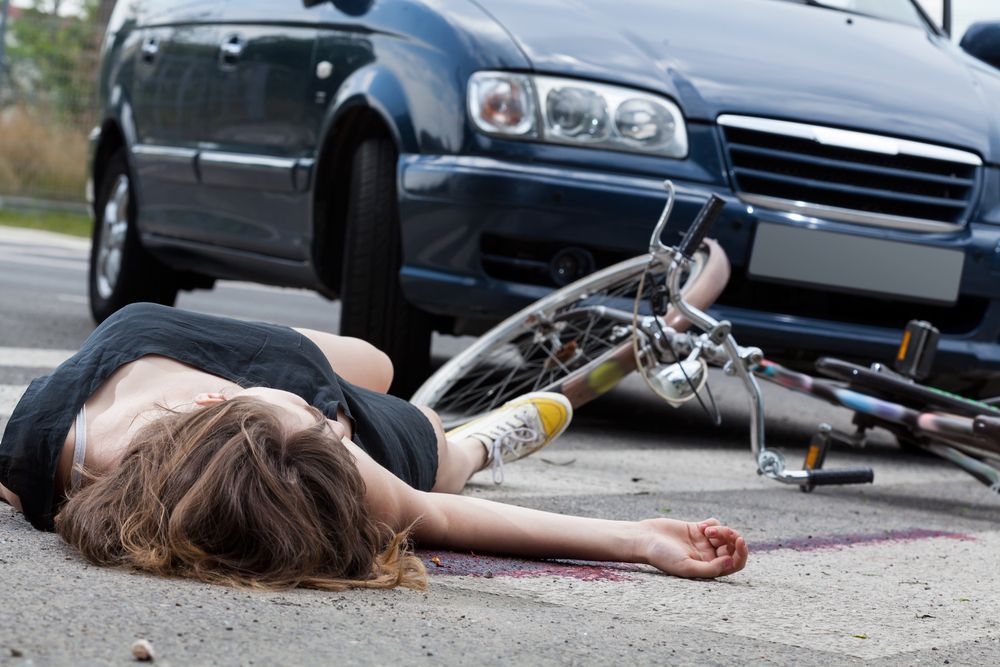
Increased Risk of Head and Brain Injury Without a Bicycle Helmet
Statistics Source: Meta-analysis (1989-2017) findings for bicycle-related head injuries
There is a significantly higher chance of life-altering head and facial injuries for bicycle accidents that occur without wearing helmets.
- Bicycle helmets reduce head injuries by 48%
- Serious head injuries lowered by 60%
- Traumatic brain injury decreased by 53%
- Head and facial injuries cut by 23%
Helmet use is linked to a 34% decrease in cyclist deaths or serious head injuries.
This study starkly highlights the protective benefits of bicycle helmet use in reducing cyclist fatal head injuries and death.
Statistics Source: Bicycle Helmet Safety Institute Specific Data from the United States (2018-2019)
- Bicycling without a bicycle helmet led to a staggering 1,700 severe brain injury deaths. This represents 62% of all bicycle-related head injuries and fatalities
- Over 905,000 were reported as head injuries, accounting for 32% of all bicycling injuries
Despite the overwhelming evidence supporting helmet efficacy in reducing head injuries, adoption rates in several countries remain stubbornly low. Notably, many riders choose to forgo helmets in cycling-friendly nations like the Netherlands, Denmark, and Germany, exposing themselves to unnecessary risks.
These statistics are a call to action to reduce bike accidents without helmets. They're not meant to scare but to inform and motivate change. Wearing a bicycle helmet is a simple step that can have a profound impact on safety, potentially saving lives and preventing thousands of head injuries each year.
Severity and Frequency of Bike Accidents
The decision to skip wearing a bicycle helmet while cycling might seem inconsequential at the moment, but the statistics paint a starkly different picture. Let's dive into the numbers that highlight the critical importance of helmet use.
- 1,000 Bicyclists Die Annually: Each year, close to a thousand lives are lost in the United States due to bicycle accidents on the road. This figure isn't just a number; it represents individuals, families, and communities forever changed by preventable tragedies.
- Over 130,000 Injuries: Beyond the fatalities, more than 130,000 cyclists find themselves injured in crashes. These injuries range from minor to severe, with many having long-term impacts on the victims' lives. The physical, emotional, and financial toll of these injuries underscores the need for protective measures, like helmet use.
- Economic Impact Exceeds $23 Billion: The financial ramifications of bicycle injuries and deaths from crashes are staggering, exceeding $23 billion annually in the United States. This includes healthcare costs, lost work productivity, and the immeasurable cost of lost quality of life. Investing in a helmet seems a small price to pay in comparison.
- Risk Factors: Certain groups face higher risks. Adults aged 55-69 have the highest bicycle death rates, while adolescents and young adults have the highest rates of bicycle-related injuries treated in emergency departments.
- Urban Areas and Non-Intersection Roads: Most bicyclist deaths occur in urban areas, with about 64% happening on sections of roads away from intersections. This suggests that high-speed roads and urban settings pose significant risks to cyclists, areas where helmet use could be especially beneficial in preventing fatalities.
- Alcohol Involvement in Fatal Crashes: 34% of all fatal bicycle crashes in 2020 involved alcohol, either by the motor vehicle driver or the cyclist involved. Alcohol consumption increases the risk of an accident and the likelihood of severe injury or death, making the bicycle helmet case use even more compelling.
- Urban Areas as High-Risk Zones: Seventy-nine percent of fatal pedal-cyclist crashes in 2020 occurred in urban areas. This statistic is a stark reminder of the dangers cyclists face in city settings, where traffic is denser, and the potential for accidents is higher.
- Rising Bicyclist Fatalities: In 2021, 966 bicyclists were killed in traffic crashes. This figure represents an increase from previous years, highlighting a growing concern for bicyclist safety on our roads. Each number in this statistic is a life lost, underscoring the urgent need for preventive measures, including bicycle helmet use.
- Seasonal and Location Risks: Bicyclist deaths peak during the summer months, from June to September, and nearly three-quarters of all bicyclist deaths occur in urban areas. These patterns suggest that both the time of year and the cycling environment significantly affect safety. Awareness and preparedness can help cyclists navigate these risks more safely.
- Common Causes of Fatal Crashes: Failing to yield the right of way is a leading factor in fatal bike crashes, followed by issues related to visibility. Even the rate of crashes for motor vehicle involvement increased due to failing to yield the right of way.
Crashes involving motor vehicles and other bicycles stress the importance of both cyclists and motorists being vigilant, following the rules of the road, and ensuring they are seen to prevent collisions.
Understanding Bicycle Helmet Laws
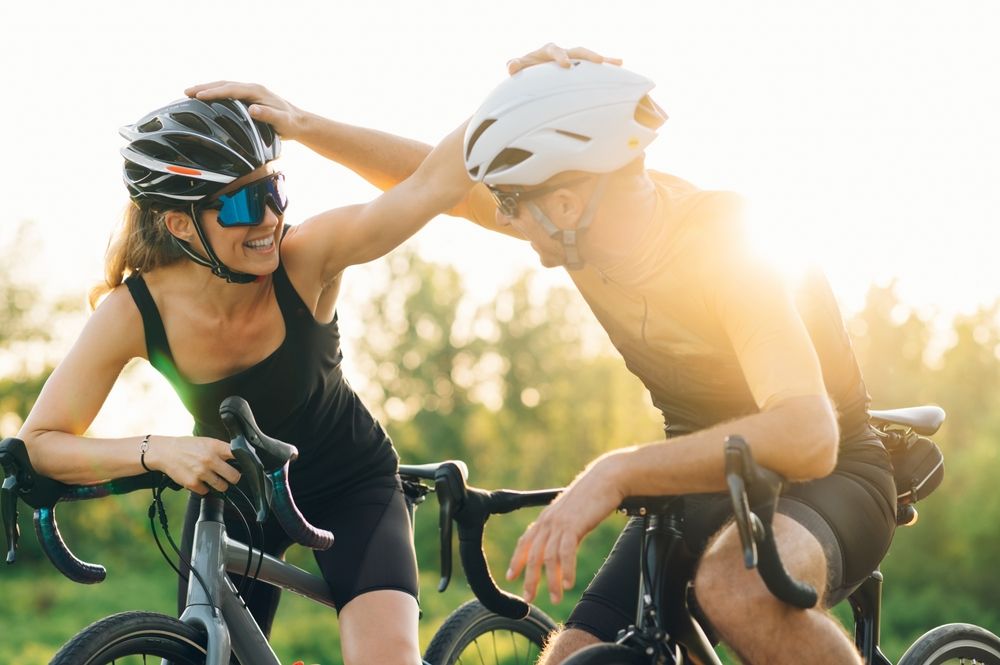
Understanding bicycle helmet laws can be as crucial as the ride itself. While the specifics can vary widely from one jurisdiction to another, being informed is your first line of defense on the road. Let's break down the essentials.
Are Bicycle Helmet Laws the Same in Every State?
In the United States, there's no overarching federal mandate for wearing bicycle helmets. However, various states and local governments have their own specific helmet laws. The majority of these laws focus on protecting children under the age of 18, although 49 laws apply to cyclists of all ages.
Currently, 22 states, along with the District of Columbia, enforce statewide bicycle helmet laws (again, usually focusing on minors), and over 200 local jurisdictions have their specific regulations. Additionally, many states are now implementing specific helmet requirements for electric bicycle riders.
Learn more about why bicycle helmet laws vary in our article The Bicycle Helmet Law Debate: Why the U.S. Lacks a National Mandate
Bicycle Helmet Legislation
In the realm of cycling safety, helmet legislation plays a pivotal role in protecting riders, especially the younger demographic.
For instance, California law requires anyone aged 18 and under to wear a helmet when operating a bicycle, scooter, skateboard, or using roller skates in public spaces. This law extends to bike passengers aged 5 and under, emphasizing the state's commitment to safeguarding its youngest cyclists.
Legislation Specifics
- Helmets are required on streets, bikeways, sidewalks, and public bike paths except on private properties.
- Some states allow exemptions for religious beliefs; California does not.
Penalties and Compliance
- Non-compliance fine: $25, usually paid by parent or guardian.
- Redemptive option in California:
- Showing an approved, properly fitted bike helmet.
- Proof of attending a bicycle safety course within 120 days can waive fines and citations.
Why Aren't Bicycle Helmets Required for All Cyclists?
Arguments against bicycle helmet laws often stem from concerns about personal freedom, the effectiveness of such laws in promoting safety, and their impact on cycling culture and public health. Here are some of the main reasons and arguments presented by those who oppose these laws:
- Personal Freedom and Responsibility: Opponents argue that helmet wearing should be a personal choice, not a government mandate. They believe individuals should have the autonomy to assess their own risk and decide whether or not to wear a helmet without legal compulsion.
- Questionable Effectiveness: Some critics question the effectiveness of helmets in preventing serious injuries in certain types of accidents, especially involving motor vehicles. They argue that helmet laws may create a false sense of security, diverting attention from more impactful safety measures like improving cycling infrastructure and promoting defensive riding skills.
- Impact on Cycling Rates: Evidence from some areas suggests that helmet laws might deter people from cycling due to the inconvenience or cost of buying a helmet. Critics argue that anything that reduces cycling participation can negatively impact public health by decreasing physical activity and increasing congestion and pollution from increased car use.
- One-Size-Fits-All Approach: Critics say helmet laws do not account for the varying levels of risk in different cycling environments. For example, riding in a quiet park poses a different risk level than cycling in busy urban traffic. They argue for a more nuanced approach to cycling safety that considers context.
- Enforcement Priorities: There are concerns about the allocation of police resources to enforce helmet laws, which could be better spent on addressing more significant public safety issues, including preventing accidents through traffic law enforcement against dangerous driving behaviors.
- Potential Discriminatory Enforcement: Like many minor law infractions, there's a risk that helmet laws could be enforced in a discriminatory manner, disproportionately targeting certain groups or communities, which could lead to negative interactions with law enforcement.
- Barrier to Public Bike-Sharing Programs: Helmet laws can complicate the operation of public bike-sharing schemes, which have become popular in many cities worldwide. Requiring helmets can reduce the spontaneity and convenience of using these services, potentially limiting their success and public health benefits.
-
Focus on Individual Blame Rather Than Systemic Change: Opponents argue that helmet laws place the burden of safety on individual cyclists rather than addressing broader issues that contribute to cycling accidents, such as poor road design, inadequate cycling infrastructure, and the behavior of motor vehicle drivers.
The Importance of Compliance to Wearing Helmets
Understanding and adhering to helmet laws is more than just ticking a box for legal compliance; it's a pledge to personal safety and responsibility. Wearing a bicycle helmet is your first line of defense on the road, significantly reducing the risk of head injuries.
Staying Ahead with Helmet Tech and Standards
- Safety Standards Matter: Look for helmets that meet the Consumer Product Safety Commission (CPSC) standards in the U.S. This isn't just about compliance; it's about ensuring your helmet has your back (or, rather, your head).
- Tech Integration: Modern helmets aren't just foam and straps. Features like MIPS (Multi-directional Impact Protection System) and LED lights not only add a layer of safety but also a cool factor.
Pro Tip: Dive into helmet safety ratings to find a helmet that's been through the wringer for you. Sites like the Bicycle Helmet Safety Institute are goldmines for reviews and ratings.
By dialing into the specifics of helmet laws, choosing a helmet that fits like a glove (for your head), and staying on top of safety practices, you're doing more than just following rules, you're reducing your risk of a serious head injury.
The Perfect Bicycle Helmet and Fit

Wearing a helmet while biking is a no-brainer, yet its effectiveness hinges on more than just wearing any helmet. Here’s how to ensure your helmet serves its purpose, keeping you safe and sound on every ride.
Read our in-depth article, The Ultimate Bicycle Helmet Guide for Cyclists, to find the perfect helmet and fit for you.
Choosing the Right Helmet: It's Not Just Any Helmet
- Fit is Essential: Your helmet should hug your head comfortably, with the front edge resting no more than an inch above your eyebrows to shield your forehead effectively.
- Size Matters: Measure your head circumference to find a helmet that’s just right. Too tight and it’s uncomfortable; too loose and it’s ineffective.
- Adjust for Comfort and Safety: Use the adjustable dial (if available) to get a snug fit. A well-fitted helmet should feel comfortable and secure. You should be able to place two fingers between the strap and your chin for a snug but not overly tight fit.
Visibility is Key
- Bright and Bold: Choose helmets with bright colors or reflective materials. Being seen is as crucial as seeing.
- Light It Up: Consider helmets with integrated lights or attachable light accessories for enhanced visibility during dawn, dusk, or nighttime rides.
Maintenance and Care
- Clean Regularly: Sweat and dirt can degrade your helmet’s materials. A gentle wash with mild soap and water keeps it in top condition.
- Inspect for Damage: Look for cracks, dents, or foam degradation. Remember, a damaged helmet is a compromised helmet.
Replacement is Non-negotiable
- After an Impact: Post-crash, a helmet’s integrity is compromised, even if damage isn’t visible. Always replace it.
- Every Few Years: Even without incidents, replace your bicycle helmet every 5 years due to wear and material fatigue.
Wear It Right
- Correct Positioning: The helmet should sit level on your head, covering your forehead, not tilted back or sideways.
- Strap Check: Ensure the straps form a snug 'V' under your ears, tight enough to allow only a two-finger gap between the strap and your chin. This keeps your helmet securely in place.
Educate and Advocate
- Lead by Example: Wear your helmet consistently to set a positive example for others, especially young riders.
- Spread the Word: Share the importance of helmet use with friends and family. Education is a powerful tool in promoting safety.
Stay Informed
- Know the Laws: Familiarize yourself with local helmet laws and cycling regulations to ensure you’re not just safe but also compliant.
- Continuous Learning: Stay updated on new safety research, helmet technologies, and cycling tips. Knowledge is power, especially on two wheels.
By embracing these practices, you’re not just wearing a helmet; you’re committing to your safety and setting a standard for responsible riding. Remember, a bicycle helmet is your best ally on the road, so give it the attention it deserves. Let’s make every ride a testament to safety and enjoyment
Life-Saving Stories: The Bicycle Helmets That Made a Difference
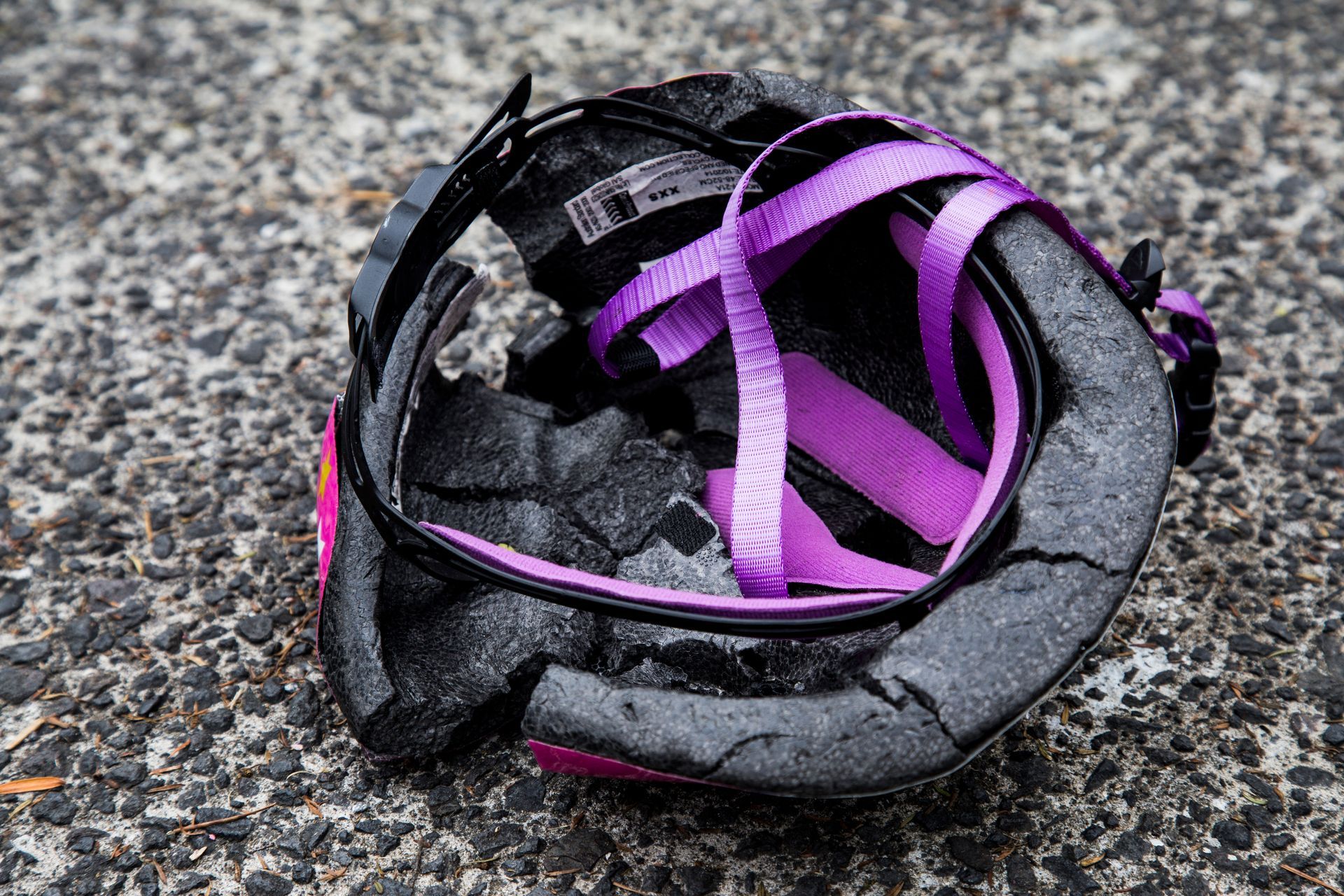
The stories you're about to read aren't just tales of close calls and narrow escapes; they're powerful reminders of the helmet's critical role in cycling safety.
As we dive into these personal experiences, remember the unsung hero in all our cycling adventures: the helmet.
Story #1
“I was taken down by a big goofy dog”
Diane Stillwagon Jensen, a Texas-based triathlete had a close call when an off-leash dog collided with her bike.
Her Giro helmet absorbed the impact, preventing any head injuries.
This incident wasn't her only brush with danger; another crash involved a car pulling out unexpectedly, leading to a concussion despite her protective gear. Jensen's experiences highlight not just the unpredictability of crashes with motor vehicle involvement but also the undeniable value of a quality helmet in mitigating injuries.
Avoid a serious head injury and wear your helmet!
Story #2
"The impact threw me head-first into his windshield"
Kathleen Putman from Ohio had two harrowing experiences with distracted drivers.
- Minor injuries after flipping over a car, thanks to her helmet.
- Rear-ended by car at 45 mph: Severe injuries but survived, crediting her helmet for saving her life.
Despite sustaining multiple injuries, she is convinced her helmet played a crucial role in her survival.
Story #3
“I only remember starting the race”
- Hannah Morales, a collegiate racer, suffered severe injuries including facial injuries from a 35 mph crash during a downhill race segment.
- Her recovery was long, but the incident spurred a community initiative to donate helmets to local schoolchildren.
Morales now passionately advocates for helmet use, sharing her story to underscore the life-saving potential of wearing helmets.
Story #4
"I was buckling my helmet”
- While Adrian Shoob was adjusting his helmet riding no-handed, hit a rock and crashed.
- Even with an unbuckled helmet on, he still walked away with three broken ribs and facial injuries.
Adrian Shoob's story adds a touch of irony to the mix. The helmet, which he was in the process of securing, protected his head during the fall. This incident humorously yet effectively illustrates the helmet's protective capacity, even in less-than-ideal circumstances.
Story #5
”I was extremely lucky!”
Jeremy Rielley and the Bike Helmet That Saved His Life
- Struck by a drunk driver's side mirror which resulted in severe injuries and head trauma.
- His shattered helmet highlights the crash's severity and the importance of helmet use.
Jeremy Rielley's encounter with a drunk driver in Chicago underscores the risks cyclists face from impaired motorists. The severe injuries he sustained, including head trauma and the state of his shattered helmet, exemplify the critical role of helmets in providing life-saving protection during such accidents.
As E-Bikes Surge in Popularity, Helmet Use Becomes Even More Critical
As cycling continues to evolve—especially with the rapid growth of electric bikes—so do the risks riders face on increasingly busy roads. E-bikes often travel at higher speeds than traditional bicycles, which can increase the severity of crashes when they happen. In this changing landscape, the dangers of bike accidents without helmets are even more pronounced.
Whether you're riding a conventional bike or an e-bike, the evidence is clear: helmet use remains one of the most effective ways to prevent serious head injuries and improve your chances of walking away from a crash.
Ride Protected. Ride Safe with Bike Legal
At Bike Legal, we are cyclists representing injured cyclists. As dedicated bicycle accident attorneys, we bring unmatched expertise in bicycle accident law and a deep understanding of the cycling community. We fight for justice and fair compensation for injured riders.
Beyond legal representation, we’re passionate advocates for cyclist safety, education, and sharing the road responsibly.
If you have been injured in a bicycle accident or just have questions, we can help.
📞 Call 877-BIKE LEGAL (877-245-3534) for a FREE Consultation.
